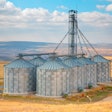
Argentina Expected To Plant Record Corn Area
The Rosario grains exchange projects the area planted to corn at a record high 7.84 million hectares in 2021/22.
The Buenos Aires Grains Exchange forecasts corn planting at 7.1 million hectares.
Soy planting is expected to decrease for the sixth consecutive year to 16.40 million hectares, the lowest since 2006.
Next year’s corn crop is forecast by the Rosario exchange at 55 million tonnes, and the soy crop is seen at 49 million tonnes.
The USDA has estimated the current 2020/21 corn crop at 48.5 million tonnes and soybean production at 46 million tonnes.
Lack of a law to ensure farmers pay royalties on soybean genetic technology has hurt access to modified stock to better withstand the risk of drought.
Argentina also imposes a 33% export tax on soybeans, while only placing a 12% levy on corn.
FBN’sTake OnWhat It Means:Corn has benefited from new technology and economic advantages over the last ten years. Late planting allows corn yields to remain steadier in dry years while soy yields drop sharply. Higher prices along with a favorable tax structure also provide greater incentive to plant corn. More corn from Argentina could help to supply the world market at a time of lower supply.

China July Soy Imports Lower
China's soybean imports from all origins were 8.67 million tonnes in July, down 14.1% from the previous year.
China brought in 7.88 million tonnes of beans from Brazil, down 3.7% from 8.18 million tonnes last year
China also imported 42,277 tonnes of soybeans from the US, up from 38,331 tonnes a year ago.
Chinese crushers front-loaded their soybean buying in the earlier months of the year due to good margins driven by its rapidly recovering pig herd.
China's sow herd, which had been rising for 21 months, fell for the first time in July from the previous month.
Demand from the livestock sector has weakened recently as hog margins fell to negative territory on a sharp decrease in pork prices.
Crush margins in a major processing hub hit the lowest levels on record in late June before starting to rebound.
FBN’sTake OnWhat It Means:Poor crush margins have weighed on demand in recent months. China's soybean imports are expected to remain slow in the next few months as falling hog margins and a rise in wheat feed use continued to reduce demand for soymeal. China has recently started buying more US beans, but the rate has been lagging expectations, and the USDA reduced its outlook for China’s soy demand in the last monthly report.
FBN Market Advisoryservices are offered by FBN BR LLC, dba FBN Brokerage, FBN BR and FBN Market Advisory (NFA ID: 0508695)
The risk of trading futures and options can be substantial and may not be suitable for all investors. Past performance is not necessarily indicative of future results.
This is not an offer or solicitation in any jurisdiction where we are not authorized to do business or where such offer or solicitation would be contrary to the local laws and regulations of that jurisdiction, including, but not limited to, persons residing in Australia and Canada.

















